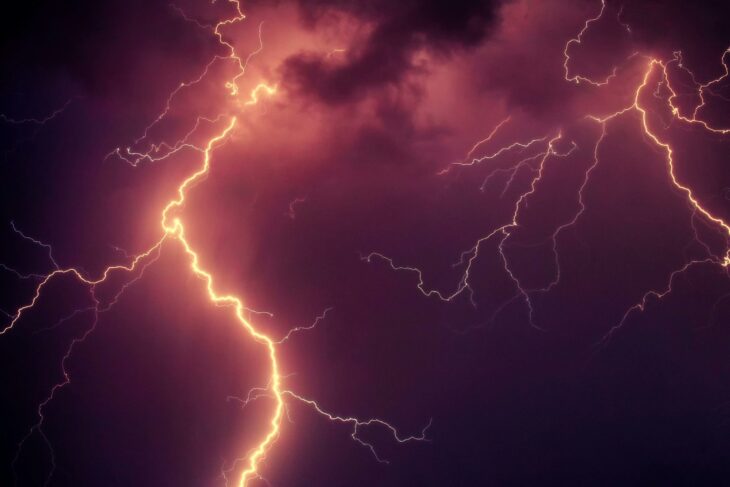Life as we know it is mostly made up of elements like carbon, oxygen, and nitrogen. These elements were common in the environment 4 billion years ago, but none were present in the form of proteins, DNA, and vitamins, the key building blocks of life. The question scientists then ask is, how did life form in an environment that contained essential elements mostly in inaccessible forms like carbon dioxide and nitrogen gas?
A team of scientists from multiple American universities combined their efforts to answer that question. They argued that an outside energy source is necessary to transform carbon dioxide and nitrogen into compounds that are more reactive and accessible for life. On the early Earth, these energy sources could have included radiation from the Sun, deep-sea hydrothermal vents, volcanoes, or even meteor impacts. Previous researchers showed lightning could make some nitrogen and phosphorus compounds more accessible. Therefore these scientists proposed that lightning could have provided the energy to make carbon dioxide and nitrogen gas usable for early life.
To test their hypothesis, the scientists built a system in their laboratory that mimics lighting strikes on the early Earth. They discharged sparks in a 50 milliliter (about 2 ounces) glass flask filled with 10 milliliters (about half an ounce) of liquid water and an atmosphere representative of the early Earth, 80% carbon dioxide and 20% nitrogen. To replicate a realistic environment, they performed 4 experiments with different salt concentrations in the water, 2 similar to the ocean and 2 similar to fresh rainwater that contained almost no salts.
For the last variable, they introduced minerals commonly found on Earth, like calcite and magnetite, to one of the flasks containing salts and to another that did not contain salts. The scientists hypothesized that the lightning could trigger these minerals to react with carbon dioxide and nitrogen, creating a broader range of molecules than in the experiments without minerals.
The team analyzed the gases and liquids inside the glass flasks using different analytical techniques before and after the lightning discharge. To analyze the gases, they used 2 techniques sensitive to gaseous molecules, called infrared spectroscopy and gas chromatography. With these, they could detect any compounds containing carbon and nitrogen that stayed in the atmosphere inside the flask. They measured different properties of the carbon and nitrogen-rich compounds found in the liquids using chemical analyses including UV absorption spectroscopy, capillary electrophoresis, nuclear magnetic resonance, and mass spectrometry. These techniques helped the scientists identify the molecules in the liquids with greater precision.
The scientists compared the variety and quantity of molecules for each combination of salts and minerals before and after the discharge. Overall, they found that the same molecules bacteria synthesize from nitrogen in the atmosphere, mainly nitrogen oxides, ammonia, and nitrates, formed in quantities comparable to their modern concentrations in soils. They also detected acetate and formate, which are both carbon-rich compounds found in all known living organisms at varying concentrations.
They found that in the experiments with more salts, the yields of both the nitrogen and carbon-containing molecules were, on average, 3 times larger. In the experiments with minerals, however, the yields of each molecule were 1.5 times lower, but there was a 20% increase in the variety of chemicals produced. The scientists argued that the minerals allowed more molecules to react inside the flasks, creating a greater diversity of chemicals in the water.
The scientists highlighted that their results suggest lightning could be more effective than other energy sources at generating nitrogen and carbon-containing molecules accessible to life. They also found that lightning striking water with minerals, which mimics wet ground, produced many more molecules needed for life than lightning striking pure salt water. They suggested that future scientists should perform more experiments with a larger variety of minerals, to explore the full potential of these reactions and further test whether they could have helped the formation of life and its early evolution.


